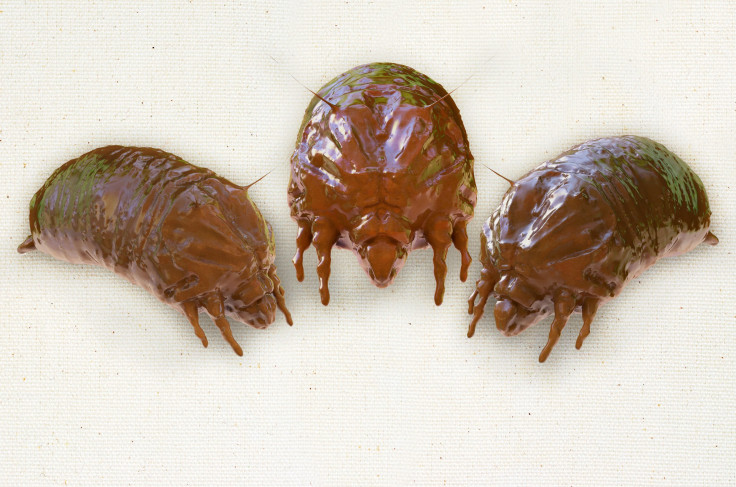A Dust Mite May Share Your Airline Seat On The Flight Home This Holiday Season

Here’s a new one for the gross-out list. A study from University of Michigan suggests countless tiny creatures board our holiday flights with us. In fact, genetic mutations shared by mites in the United States and Pakistan demonstrate their ability and propensity for intercontinental travel.
“House dust mites can easily travel on an airline passenger's clothes, skin, food and baggage,” Dr. Pavel Klimov, a biologist and assistant research scientist, stated in a press release. “Like humans, they use air travel to visit new places, where they establish new populations, expand their ranges, and interact with other organisms through various means.”
Klimov and Dr. Rubaba Hamid, a visiting scholar at UM, looked at the connections between house dust mite populations in the U.S. and South Asia. In particular, Klimov, Hamid, and their colleagues focused on two separate species, the American and European house dust mite. Though the former is more abundant in the U.S., both species are distributed throughout the world. Ancestors of the two species probably once inhabited bird nests and then separated from each other nearly 81 million years ago — long before our own human origins. Today, these house dust mites live (and thrive) in even the cleanest homes, hiding away in mattresses, sofas, and carpets, where they inspire allergic reactions in more than 65 million people worldwide.
Examining the Genes
After collecting samples of the two mite species in the U.S. and Pakistan, the researchers examined genetic variation in the group 1 allergen gene — this gene encodes in house dust mites the most important allergy-causing protein. An inactive form of this protein is used worldwide in the standard skin-prick test for allergies. Though the test can be inaccurate if it does not include local genetic variants of the protein, geographical variation in group 1 allergen proteins has not been extensively studied in the U.S., Klimov explained.
After performing genetic sequences on the American house dust mites (Dermatophagoides farina, by name), the researchers found mutations at 14 positions along the length of the group 1 allergen gene. All but one of the mutations are silent, meaning they do not change the actual structure of the protein.
"The most unexpected result was the finding that a previously unknown mutation occurred at the active site of the protein at position 197," Klimov said. "This was a rare mutation, found in only a single population of house dust mite in South Asia." His colleague clarified the results:
"What we found suggests that mite populations are indeed linked through migration across continents, though geographic differences still can be detected," Hamid said. In other words, they’re flying on our planes, carried by passengers like you, me, and your Auntie. Follow-up experiments to learn more are underway in the UM lab.
Source: Hamid RS, Klimov PB, Inam M, et al. Group 1 Allergen Genes in Two Species of House Dust Mites, Dermatophagoides farinae and D. pteronyssinus (Acari: Pyroglyphidae): Direct Sequencing, Characterization and Polymorphism. PLOS One. 2014.
Published by Medicaldaily.com



























